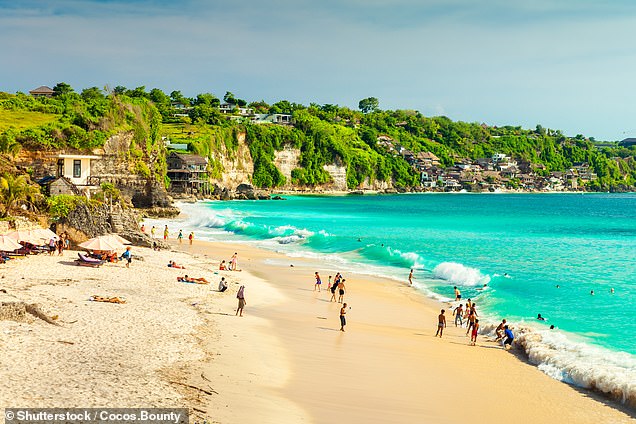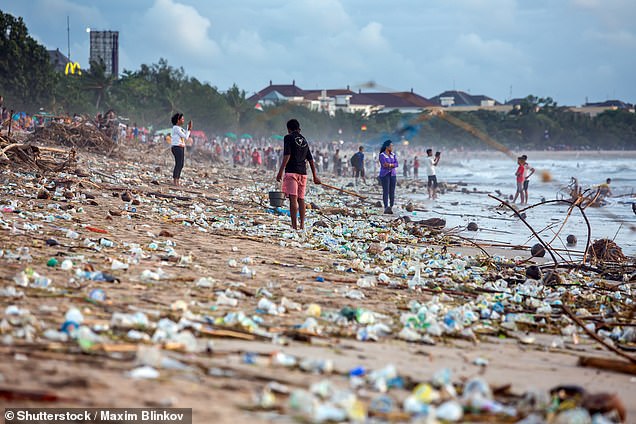Bali – long glamourised as a tropical escape brimming with waterfalls, temples and self-discovery – is now facing a growing backlash from tourists who say the reality doesn’t live up to the Instagram dream.
Despite welcoming an impressive 2.6 million international visitors in the first five months of 2025, many travellers are leaving the Indonesian island feeling anything but spiritually fulfilled.
Some are now warning others about the darker side of Bali – one that videos on social media and influencers often fail to capture.
With its lush jungles, volcanic peaks, serene beaches and spiritual roots, Bali has the ultimate destination for those in search of a ‘wellness’ break.
But as the number of annual visitors continue to surge, many former visitors are now speaking out about the island’s challenges – from overtourism and pollution, to run-down infrastructure and chaotic traffic.
Ubud, the island’s cultural hub popularised in Eat Pray Love, is said to be overrun with selfie sticks and scooters, while Seminyak, once a laid-back beach town, has allegedly become the standard for up-market beach clubs and late-night partygoers.
Read on to discover the reality of Bali, according to seasoned travellers.
Overtourism
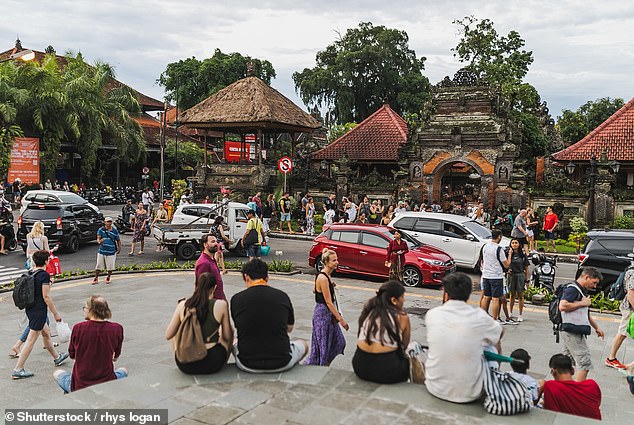
Quiet temples and nature trails in Bali are now teeming with tourists, leading to long queues, loud crowds, and a feeling of inauthenticity for many visitors

Harry Mackarness (pictured) said Bali was not how ‘influencers’ made it out to be
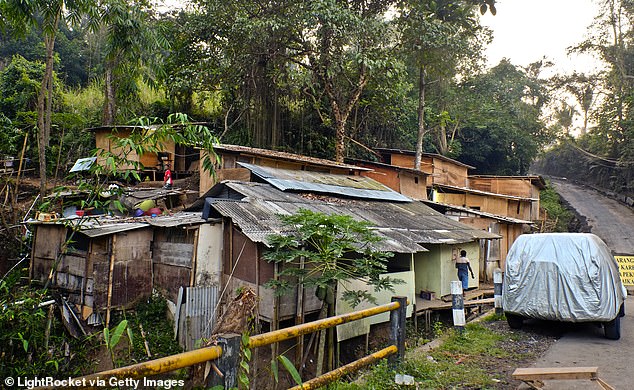
Mr Mackarness said Bali is overcrowded, dirty, and rundown, blaming mass tourism (stock image)
According to a number of travellers, mass tourism is one of the biggest contributing factors to the island’s current ‘chaotic’ atmosphere.
Quiet temples and nature trails are now teeming with tourists, leading to long queues, loud crowds, and a feeling of inauthenticity for many visitors.
Fitness and travel influencer, @resurgent_harry, said: ‘It is completely overcrowded.’
A TropEcoTravel contributor also wrote: ‘Overtourism has ruined the true heart and soul of Bali.
‘I don’t know what Bali was like before the onslaught of tourists and plastic, but I would imagine it was a tropical haven with thriving locals and untouched landscapes.’
In 2024, Fodors Magazines labelled Bali the top destination to avoid, and said of its tourist-heavy hotspots: ‘These locations are popular for good reason – they are stunning, intriguing, and culturally significant.
‘However, some of these highly coveted tourist spots are collapsing under the burden of their own prominence.’
Pollution
Several visitors have described finding piles of garbage near popular natural attractions, including waterfalls and beaches

Plastic pollution is a growing issue, particularly during rainy season when rubbish washes to shore in large volumes
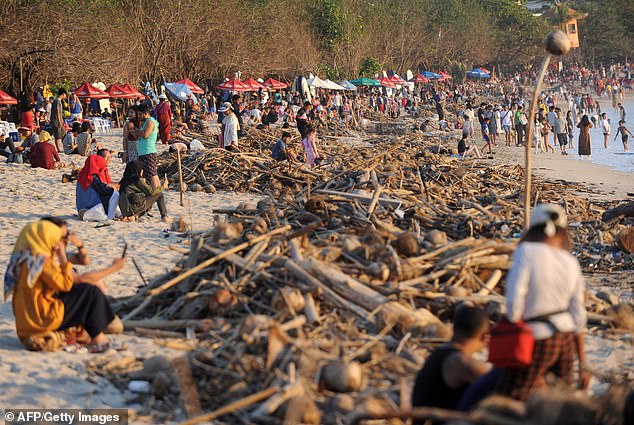
A general view shows debris and rubbish washed ashore at Kuta beach on Indonesia’s resort island of Bali on February 15, 2019
Several visitors have described finding piles of garbage near popular natural attractions, including waterfalls and beaches.
Plastic pollution is a growing issue, particularly during rainy season when rubbish washes to shore in large volumes.
Fitness and travel influencer, @resurgent_harry, also said in a recent video: ‘You can’t go for a run, there is trash everywhere. The beaches are completely covered in trash.’
Travel blogger Dale Philip was left dismayed after visiting popular picture spot, Pengempu waterfall, during his recent visit to the island.
In a post to social media, he wrote: ‘I’d seen this place looking amazing in many flashy, glamorous photos but when I arrived there myself, I found out that it was covered in garbage.’
In the clip, he exposed piles of litter and plastic bottles collected along the riverbed, as he added: ‘I did not expect to see all this junk lying here.’
Joshwa, a travel influencer who regularly posts about his journeys around the world on TikTok, also posted a series of clips from his time in Bali.
One of the content creator’s videos showed decrepit buildings, abandoned beanbags along a beach and litter piled high.
Another video featured a sign that read ‘please stop littering’, stood next to a pile of plastic bottles and other rubbish.
Infrastructure and traffic
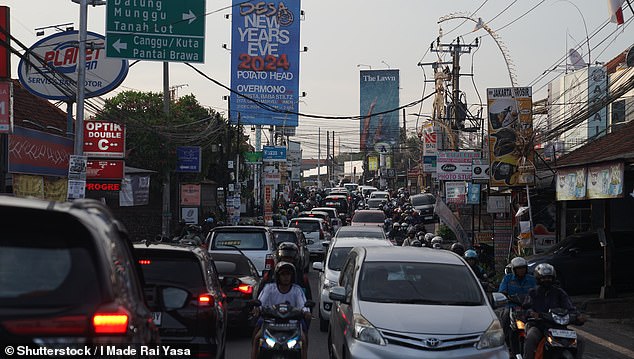
Bali’s narrow roads, limited public transport and influx of visitors mean traffic jams are a daily norm in popular areas.
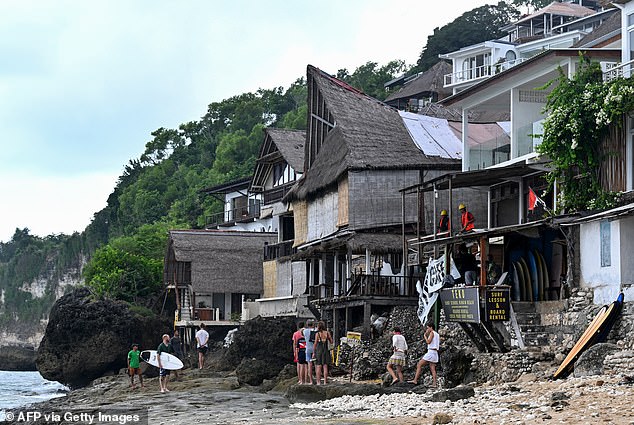
Jamie, a travel blogger from Durham, wrote of his experience on his blog: ‘Bali cannot cope with well over 4 million visitors a year’
Bali’s narrow roads, limited public transport and influx of visitors mean traffic jams are a daily norm in popular areas.
Harry Mackarness, who spent two months on the so-called ‘Island of the Gods’, said his visit left him ‘deeply depressed, disillusioned, and determined never to return‘.
In a scathing YouTube review, Mackarness claimed the island is buckling under the weight of mass tourism and plagued by gridlocked roads, rundown accommodation, and a tourism industry more interested in profit than hospitality.
‘Everywhere you go, there’s rubbish, construction, or scams,’ he said, ‘The infrastructure just can’t handle the number of people being sold this dream.’
Jamie, a travel blogger from Durham, wrote of his experience on his blog: ‘Bali cannot cope with well over 4 million visitors a year. It’s no secret that Bali’s roads are heavily congested.
‘On a typical day in Ubud, the cultural centre, every road in and out is full of stand-still traffic. You can’t get anywhere without walking and without breathing in polluted air.’
Will Hatton, a World Nomads contributor, described traffic in Bali as ‘complete chaos’ and ‘hell’, adding that road accidents are ‘common’ and many newly-qualified scooter drivers will ride vehicles without helmets.
Tourist traps and touts
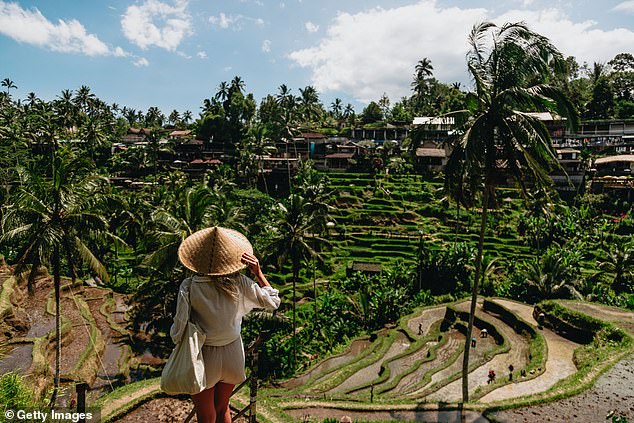
Pictured: Woman enjoying Bali rice fields
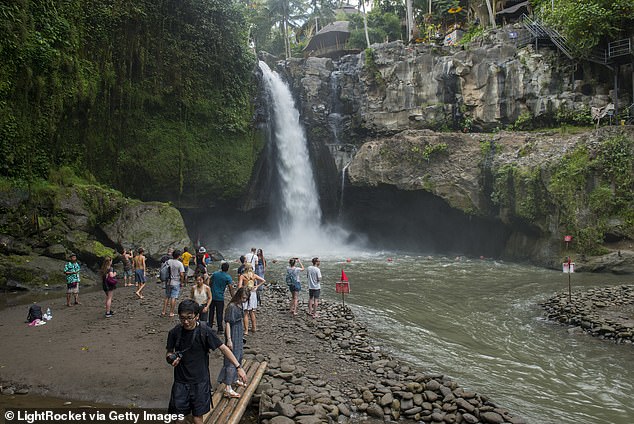
Over-commercialisation has led to what some describe as aggressive touting and inflated prices near temples, markets and popular nature spots. Pictured: Tourists at the Tegenungan Waterfall
Over-commercialisation has led to what some describe as aggressive touting and inflated prices near temples, markets and popular nature spots.
According to Jamie’s blog post, travellers walking through the streets of Bali should not expect ‘a moment’s peace’ from merchants and taxi drivers.
He added: ‘Everywhere someone is selling something. I didn’t visit the Tegalalang Rice Terraces for this reason. I’ve heard that you have to pay initially to enter. Then there are additional payments to “staff” in order to progress down the terraces.
‘If you want to get around Bali too the best way is to hire your own driver for the day. Public transport is practically non-existent and taxis are often controlled by “mafia” in order to keep prices higher.’
Another visitor, who wrote a scathing review on a blog named Hyder Sea Travels, described the infamous Uluwatu Temple as a ‘huge tourist trap.’
They warned: ‘Yes, the view is amazing from the cliff. However, you cannot visit the temple or get close to it.
‘What you are coming here to visit is the area around the temple, in the blistering heat and the burning sun. You also need to pay at the gate for your car or scooter.’
Rowdy tourists and influencers
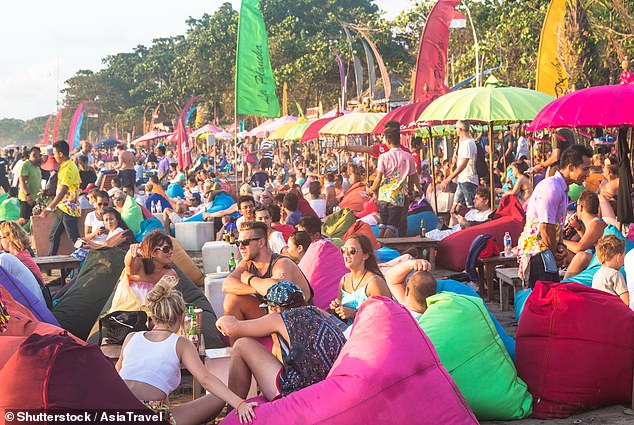
Loud parties, beach clubs and disrespectful behaviour from intoxicated revellers have left a bad taste, with travellers blaming rowdy tourists for degrading the island’s atmosphere

Molly-Mae Hague’s sister Zoe Rae (pictured) was mocked by fans for leaving Bali after just 48 hours because it didn’t live up to her expectations

One of the online critics who agreed with Zoe and Danny’s point of view was fitness and travel influencer Harry – whose Tiktok handle is @resurgent_harry
With Bali’s growing popularity among influencers, some travellers say the constant filming and performative spirituality have diluted the island’s appeal.
All the more, influencers often present a curated and idealised version of Bali on social media, which can create unrealistic expectations for other travellers.
It comes after Mollie Mae Hague’s sister Zoe Rae came under fire for leaving Bali just 48 hours after she arrived because it ‘did not live up to expectations set by other influencers’.
After sharing her honest review in a YouTube video, Zoe’s followers claimed they were ‘surprised’ by her reaction because the island is a developing area of the world where many live in poverty.
Loud parties, beach clubs and disrespectful behaviour from intoxicated revellers have also left a bad taste, with numerous travellers blaming rowdy tourists for degrading the island’s atmosphere.
Travel blogger Jamie further wrote on his blog: ‘I didn’t expect Bali to be such a party island.
‘Seminyak is apparently a more up-market resort but, once the Aussies descended on it, it was no different to “Brits abroad” descending on Magaluf.’


